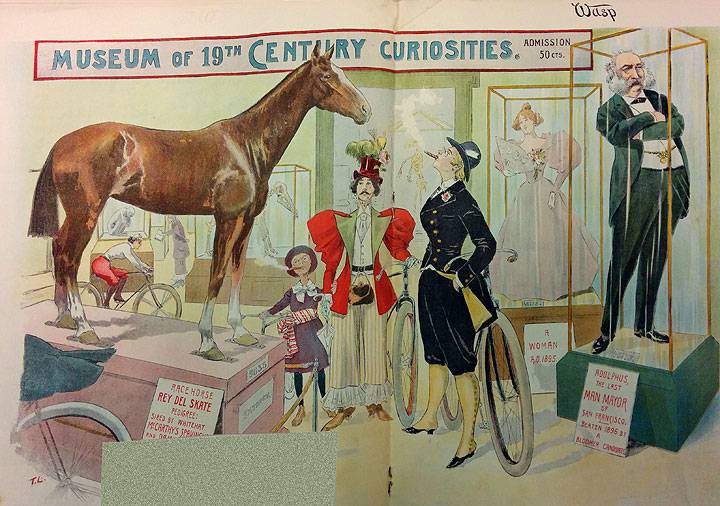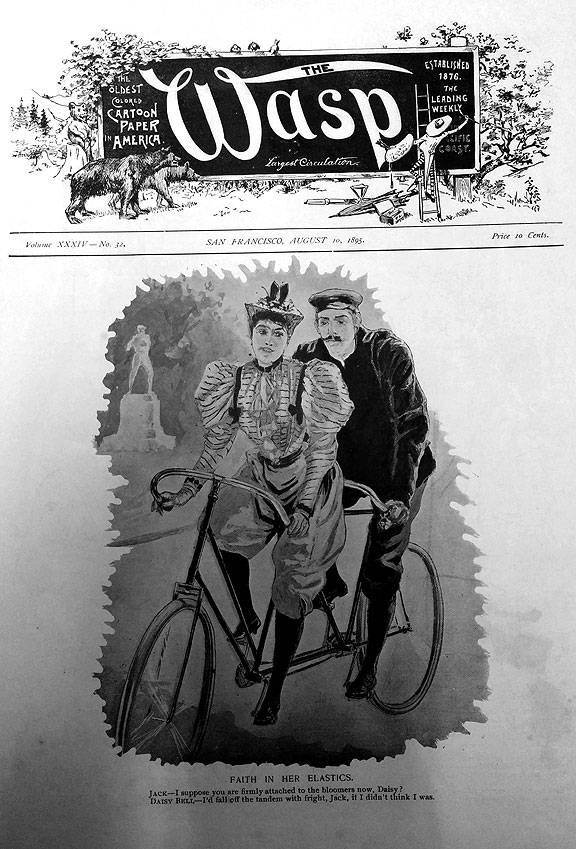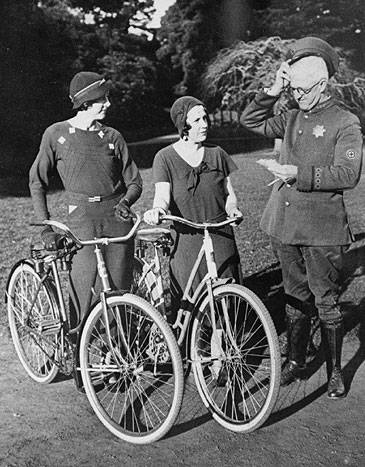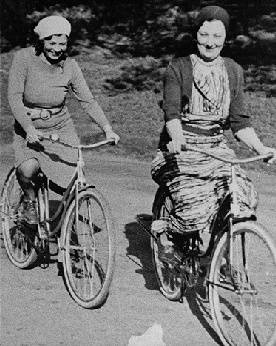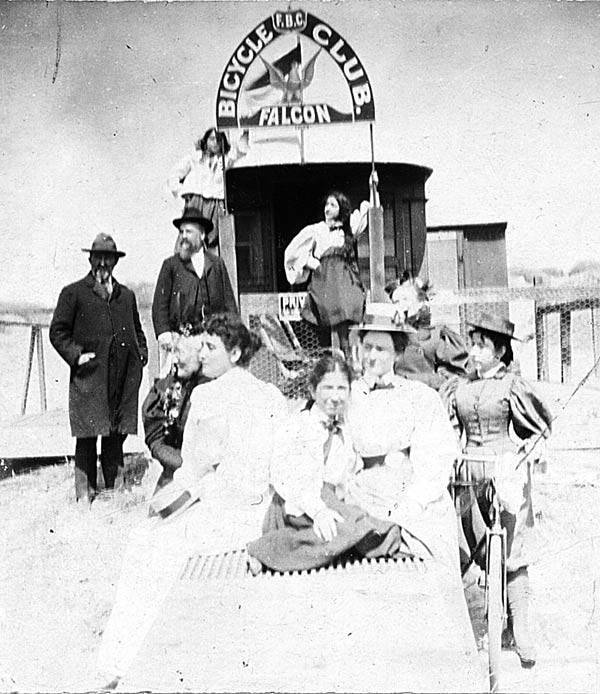Women & Bicycles
Historical Essay
by Laura Fraser
The women of the Liberty Cycling Club astride their Liberty cycles, c. 1895.
Photo: California Historical Society
Museum of 19th century curiosities from the WASP... modern women with their bicycles examine the relics of times gone by (or soon to pass!)
Image: California Historical Society
In the early 1890s, a few fashionable women in San Francisco began to shorten their skirts a few inches to accommodate their latest pastime: bicycling. By 1895, so many women in the United States were bicycling that they started a new movement for dress reform (trading long skirts and petticoats for shorter outfits, bloomers, and gaiters). But more important than the new freedom of dress was the new freedom of movement.
Bloomers were the rage in the mid-1890s, making the cover of The Wasp.
Image: California Historical Society
As Mrs. Reginald de Koven wrote for Cosmopolitan magazine in August, 1885, "To men, rich and poor, the bicycle is an unmixed blessing, but to women it is deliverance, revolution, salvation. It is well nigh impossible to overestimate the potentialities of this exercise in the curing of the common and characteristic ills of womankind, both physical and mental, or to calculate the far reaching effects of its influence in the matters of dress and social reform ."
The bicycle was seen as a cure for women who suffered from the cultural diseases of the era--hysteria, vapors, and nerves--that were brought on by stiflingly tight corsets and social manners.
"The rewards which this exercise offers are so great, in the fascination of the free motion, the exhilaration of the sense of power over the wheel, the delight of flying through the landscape," Mrs. de Koven went on, "that it is no wonder it is potent to bring delicate, fanciful women off their couches, and to rid them of vapors and nerves."
Sally Emerson and Jean Williams stump an officer in 1933 in Golden Gate Park.
Photo: San Francisco History Center, San Francisco Public Library
Cycling in Golden Gate Park c. 1930s.
Even more amazing bicycle-cures seemed to be possible: "The bicycle actually has been used by physicians as a means of curing insanity, and there is an authenticated case of an inmate of a retreat in Brooklyn who was restored to sanity by the use of the machine; surely an astonishing proof of what this regular absorbing physically healthful exercise may do for a mind diseased.
Falcons Women's Bicycling Club at Carville by the Sea.
Photo: Shaping San Francisco
Fashion and society were definitely part of the Falcons' interest in the horse car clubhouse. Mrs. Fitzgerald, the club's ringleader, rented the (street)car not only as a place to rest after rides—the long, upholstered seats served very well for naps—but as an interesting locale for the seven married ladies to entertain. Sunday morning rides to the beach were followed by breakfasts and card games in the car, and soon the women hosted dinner parties as well.
The Falcons' car sported alternating curtains of blue and white denim in the windows, matching bule and white coverlets upholstering the long seats, and blue and white matting on the floor. Between the windows, the ladies hung paintings of bicycles and seascapes. At the back of the car, the Falcons added a kitchen and shed for their bicycles. Three coal oil stoves fueled dinners for as many as 35, although parties that large took place al fresco.
The Falcons mounted the car on a wooden raft foundation to keep it from sinking in the sand, and surrounded it with a low wire fence. A short swing gate allowed entry beneath an arch featuring the club logo. On the roof of the car, the ladies mounted a bicycle wheel.
from Carville-by-the-Sea: San Francisco's Streetcar Suburb by Woody LaBounty


